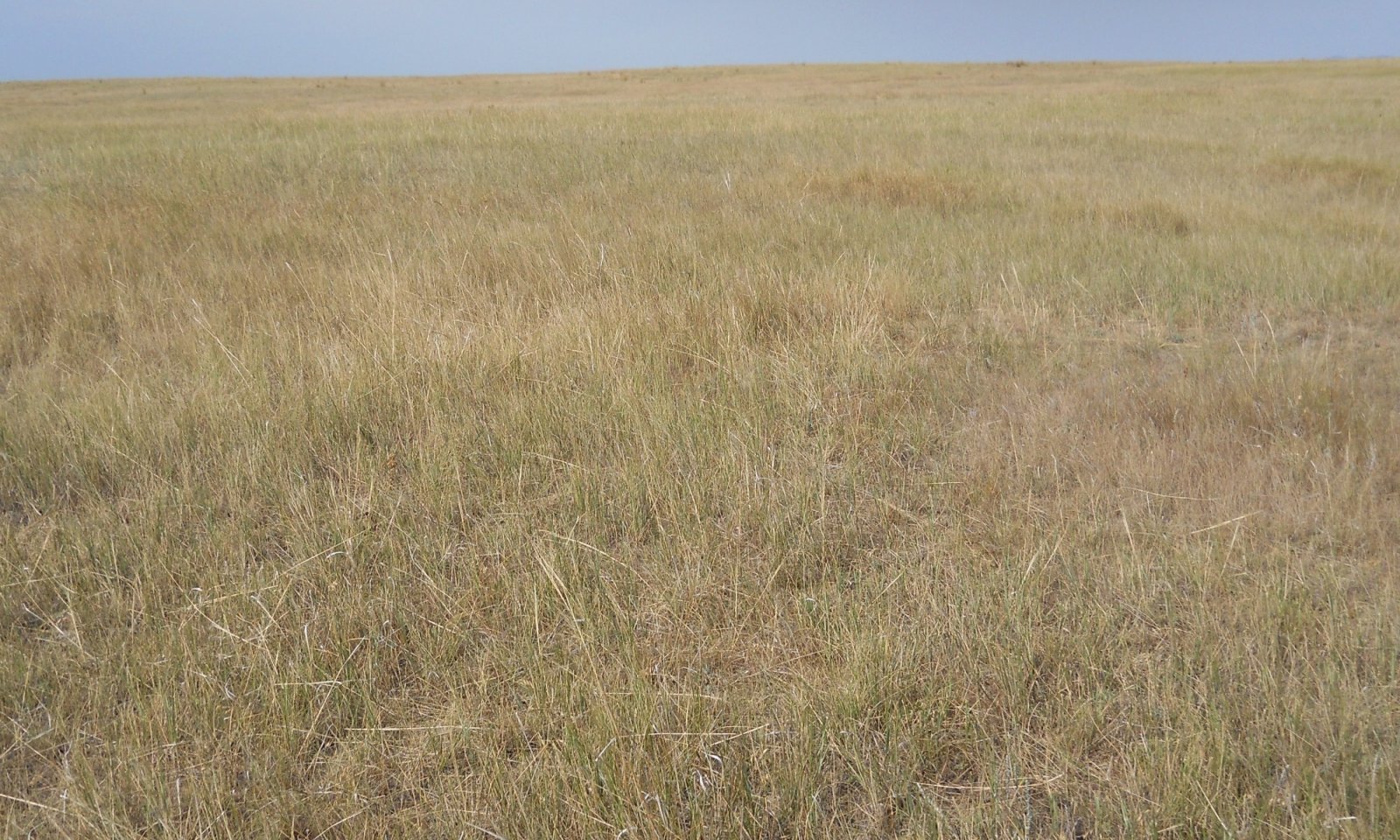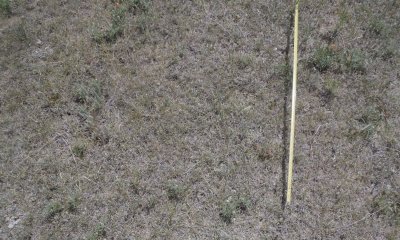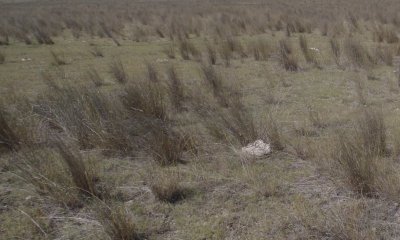
Loamy (Lo) Dry Grassland
Scenario model
Current ecosystem state
Select a state
Management practices/drivers
Select a transition or restoration pathway
- Transition T1A More details
- Transition T2A More details
- Transition T2B More details
- Transition T2C More details
- Restoration pathway R3A More details
- Transition T3A More details
- Transition T3B More details
- Transition T4A More details
- Transition T5A More details
- Transition T6A More details
-
No transition or restoration pathway between the selected states has been described
Target ecosystem state
Select a state
Description
The Historic Reference State contains a single community phase characterized by mid-statured, cool-season grasses. This phase evolved under the combined influences of climate, grazing, and fire.
Submodel
State 2
Contemporary Reference State



Description
The Contemporary Reference State consists of three community phases. The dynamics of this state are driven by the combined influences of climate, grazing, and fire. Dense clubmoss may be present in any of the phases within this state, however, its density is highly variable and the dynamics of this species are not well understood. Research has shown that its density is effected by drought, fire, and hoof action by grazing animals (Coupland 1950, VanDyne and Vogel 1967, Clarke et al. 1947). However, its abundance may vary greatly from site to site without discernable reason. In general, this state is characterized by a predominance of mid-statured, cool season grasses. As ecological condition declines; mid-statured grasses decrease and are replaced by short statured grasses such as blue grama and Sandberg bluegrass. Community Phases 2.1 and 2.2 have similar species composition but differ primarily in the amount of litter accumulation and the cover of non-native annual bromes. The At-Risk Community Phase (2.3) is dominated by blue grama and needle and thread, although needle and thread decreases in this phase while blue grama is increasing. Improper grazing management, fire suppression, and drought can transition this state to the Shortgrass State (3).The cool-season, rhizomatous wheatgrass component has low production and decreases in the At-Risk Community Phase (2.3). If present on the site, the cool-season bunchgrass green needlegrass also decreases and will become rare or disappear from the site. Shortgrasses, particularly blue grama and Sandberg bluegrass increase in the At-Risk Community Phase (2.3) as does prairie sagewort.
Submodel
Description
The Shortgrass State consists of two community phases. The dynamics of this state are driven by improper grazing management, long-term drought, or a combination of these factors. Primary grasses in the Shortgrass State are blue grama and Sandberg bluegrass. Rhizomatous wheatgrasses and needle and thread have low production and poor vigor in this phase and prairie sagewort is common. Blue grama increases with long-term improper grazing at the expense of cool-season midgrasses (Coupland 1961, Biondini and Manske 1996, Derner and Whitman 2009). Reductions in stocking rates can reduce blue grama cover and increase the cover of cool-season midgrasses, although this recovery may take decades (Dormaar and Willms 1990, Dormaar et al. 1994). Dense clubmoss may or may not be present in this state and the dynamics of this species are not well understood. In some cases it is abundant on heavily grazed areas, but in others it is rare or absent. Its abundance varies greatly from site to site without discernable reason, therefore, it is not considered a reliable indicator of past grazing use (Montana State College 1949). Annual bromes are also present in this state. They are naturalized but usually do not have a significant ecological impact, however, their abundance varies depending on precipitation and germination conditions.
Submodel
Description
The Invaded State (4) occurs when invasive plant species, primarily crested wheatgrass, invade adjacent native grassland communities. An estimated 20 million acres of crested wheatgrass have been planted in the western U.S. (Holechek 1981). Since the 1930s, crested wheatgrass has been planted to improve forage for livestock (Roglers and Lorenz 1983, Laycock 1988). Beginning in the mid-1980s, crested wheatgrass was often seeded on lands enrolled in the Conservation Reserve Program (CRP; Roath 1988, DeLuca and Lesica 1996). Crested wheatgrass is extremely drought tolerant, establishes readily on a variety of soil types, has high seedling vigor, and provides highly productive early season forage for livestock (Rogler and Lorenz 1983). Once established, monocultures of crested wheatgrass can persist for at least 60 years (Krzic et al. 2000, Henderson and Naeth 2005), as crested wheatgrass stands resist recruitment of native plant species (Looman and Heinrichs 1973, Henderson and Naeth 2005, Fansler and Mangold 2011).
Crested wheatgrass produces abundant seeds that can dominate the seedbank of invaded grasslands (Henderson and Naeth 2005), although crested wheatgrass cover decreases with increasing distance from seeded areas (Heidinga and Wilson 2002). The early growth of crested wheatgrass allows this species to take advantage of early season soil moisture, which may result in competitive exclusion of native cool-season rhizomatous wheatgrasses and bunchgrasses such as needle and thread and prairie Junegrass (Christian and Wilson 1999, Heidinga and Wilson 2002, Henderson and Naeth 2005). If already established, the warm-season, mat-forming blue grama may compete successfully with crested wheatgrass (Heidinga and Wilson 2002), although the ability of blue grama to persist in invaded stands is unknown due to its low seed production (Coupland 1950) and narrow germination requirements (Lauenroth et al. 1994). Reduced soil quality, (Dormaar et al. 1995), reduced plant species diversity, and simplified structural complexity (Henderson and Naeth 2005) result in a state that is substantially departed from the Reference State (2).
Submodel
Description
The Annual Cropland State (5) occurs when land is put into cultivation. Major crops in MLRA 52 include winter and spring wheat, as well as barley.
Description
The Post-Cropland State (6) occurs when cultivated cropland is abandoned and allowed to either re-vegetate naturally or is seeded back to perennial species for grazing or wildlife use. This state can transition back to the Annual Cropland State (5) if the site is put back into cultivation.
Submodel
Mechanism
Non-native annual brome (Bromus) species, introduced in the early to mid-20th century, have become naturalized in relatively undisturbed grasslands (Ogle et al. 2003, Harmoney 2007). The presence of these species can reduce the production of cool season perennial grasses (Haferkamp et al. 1997). Lack of frequent fires can weaken the resilience of the Historic Reference State (1) by increasing litter accumulation, which improves soil moisture and provides ideal conditions for seed germination and seedling establishment of non-native annual brome species, such as field brome (B. arvensis; Whisenant 1990). This increase in non-native species shifts the Historic Reference State (1) toward the Contemporary Reference State (2).
Mechanism
The Contemporary Reference State (2) transitions to the Shortgrass State (3) when cool-season midgrasses become rare and contribute little to production. Shortgrasses, particularly the warm-season, mat-forming blue grama, as well as Sandberg bluegrass, dominate the plant community. Improper grazing practices and prolonged drought or a combination of these factors weaken the resilience of the Contemporary Reference State (2) and drive its transition to the Shortgrass State (3).
Mechanism
The Contemporary Reference State (2) transitions to the Invaded State (4) when invasive plant species, particularly crested wheatgrass, invade the Contemporary Reference State (2). These communities are often adjacent to seeded pastures. Exotic plant species dominate the site in terms of cover and production. Site resilience has been substantially reduced and other rangeland health attributes such as reproductive capacity of native grasses (Henderson and Naeth 2005) and soil quality (Smoliak and Dormaar 1985, Dormaar et al. 1995) have been substantially altered from the Reference State.
Mechanism
The Contemporary Reference State (2) will transition to the Annual Cropland State (5) when the site is placed into cultivation with crops such as winter and spring wheat and barley.
Mechanism
Blue grama can resist displacement by other species (Dormaar and Willms 1990, Laycock 1991, Dormaar et al. 1994, Lacey et al. 1995). A reduction in livestock grazing pressure alone may not be sufficient to reduce the cover of blue grama in the Shortgrass State (3) (Dormaar and Willms 1990), and mechanical treatments may be necessary (Hart et al. 1985). Therefore, returning the Shortgrass State (3) to the Contemporary Reference State (2) can require considerable cost, energy, and time.
Mechanism
The Shortgrass State (3) transitions to the Invaded State (4) when invasive plant species, particularly crested wheatgrass, invade the Shortgrass State (3). This transition can occur when native plant communities are adjacent to seeded pastures. Exotic plant species, particularly crested wheatgrass, dominate the site in terms of cover and production. Crested wheatgrass can outcompete native grasses (Vaness and Wilson 2007), weakening site resilience and impacting rangeland health attributes such as the reproductive capacity of native grasses (Henderson and Naeth 2005) and soil quality (Smoliak and Dormaar 1985, Dormaar et al. 1995).
Mechanism
The Shortgrass State (3) transitions to the Annual Cropland State (5) when the site is placed into cultivation with crops such as winter and spring wheat and barley.
Mechanism
The transition from the Invaded State (4) to the Annual Cropland State (5) occurs when the site is placed into cultivation with crops such as winter and spring wheat and barley.
Mechanism
The transition from the Annual Cropland State (5) to the Post-Cropland State (6) occurs with the cessation of cultivation. The site may also be seeded to perennial forage species such as crested wheatgrass and alfalfa or a mix of native species.
Model keys
Briefcase
Add ecological sites and Major Land Resource Areas to your briefcase by clicking on the briefcase (![]() ) icon wherever it occurs. Drag and drop items to reorder. Cookies are used to store briefcase items between browsing sessions. Because of this, the number of items that can be added to your briefcase is limited, and briefcase items added on one device and browser cannot be accessed from another device or browser. Users who do not wish to place cookies on their devices should not use the briefcase tool. Briefcase cookies serve no other purpose than described here and are deleted whenever browsing history is cleared.
) icon wherever it occurs. Drag and drop items to reorder. Cookies are used to store briefcase items between browsing sessions. Because of this, the number of items that can be added to your briefcase is limited, and briefcase items added on one device and browser cannot be accessed from another device or browser. Users who do not wish to place cookies on their devices should not use the briefcase tool. Briefcase cookies serve no other purpose than described here and are deleted whenever browsing history is cleared.
Ecological sites
Major Land Resource Areas
The Ecosystem Dynamics Interpretive Tool is an information system framework developed by the USDA-ARS Jornada Experimental Range, USDA Natural Resources Conservation Service, and New Mexico State University.




